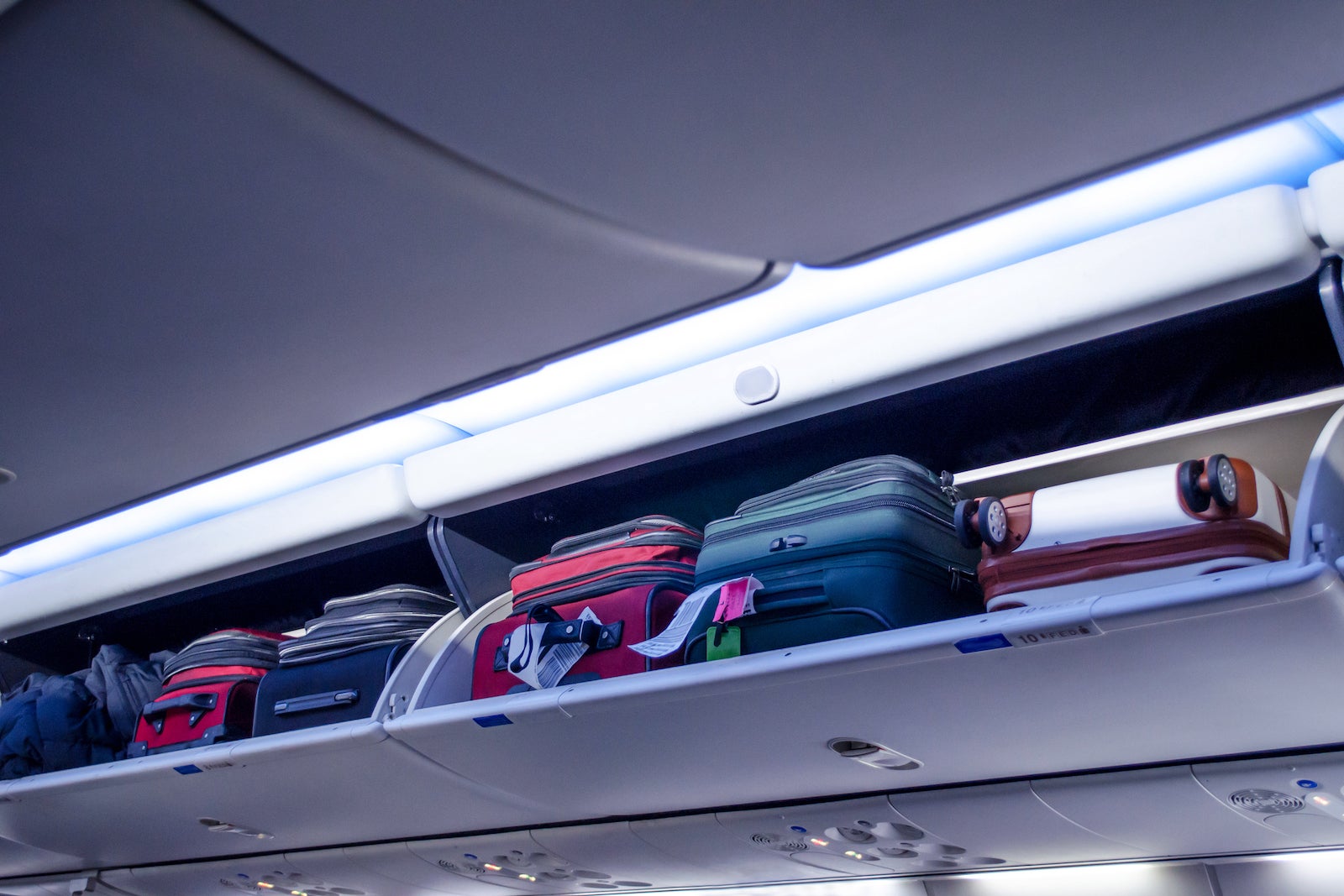
[ad_1]
Editor’s note: This is a recurring post, regularly updated with new information.
As a traveler, I am firmly team carry-on and will very rarely check a bag, while some of my colleagues prefer to always check a bag.
Even if you insist on checking a bag, certain items should always go in your carry-on.
Here are 10 items to never check, according to our TPG travel team.
Identification documents
This one should go without saying since your identifying documents, such as a passport or valid driver’s license, are among the most important items for a traveler to keep close, especially if you’re traveling abroad.
If you’re traveling domestically and don’t need a passport, all travelers age 18 and older still need a driver’s license or other state photo identification card from their state’s Department of Motor Vehicles (or equivalent) to pass through security at U.S. airports. A full list of Transportation Security Administration-accepted forms of identification is available here.
Once you’ve reached your destination, you’ll likely need to show some form of ID to check into a hotel or rent a car. If traveling abroad, we recommend carrying a picture of your passport with you while keeping your passport (and other valuables) securely locked in your room (in a hotel safe, if available).
Additionally, consider printing your travel itinerary and other important documents in case something happens to your phone or you can’t access Wi-Fi, says Erica Silverstein, TPG senior cruise editor.
Phone and charger
A phone is among the most helpful tools when traveling, especially if you have a plan that allows you to use your data internationally.
Sign up for our daily newsletter
From navigating and figuring out directions in a new place to visiting cities you’ve visited before, your phone can be a lifeline when traveling. This also means frequently having to charge your phone, which is only possible if you’ve brought the right charger and any converters to be able to use the plugs (if applicable).
Keep all of your electronics and chargers in a carry-on for easy access on the plane, where you can also use the in-seat charging portal. Charging inflight ensures your phone is fully charged before exiting the plane, minimizing the chance of a dead battery en route to your hotel or other accommodations since your room may or may not be available for check-in when you arrive.
This is also helpful if you have a lengthy layover between flights since you can’t guarantee you’ll find access to a charging station at an airport.
As a female traveler who sometimes travels solo, a working phone is crucial. All travelers, solo or not, should pack a portable charger in their carry-on and always bring that with them when they go out and about.
Headphones and electronics
In addition to your phone, some travel with other Apple products, such as an iPad and Apple Watch, requiring separate chargers. If you’re like me, you’ll never travel without two sets of headphones (one wireless and one not) since wireless ones may run out of battery.
This is also courteous for your fellow passengers since most airlines prohibit flyers from listening to shows or music out loud while also potentially providing you with headphones, depending on the airline and route.
Keep your headphones and AirPods within easy reach at all times.
If you happen to travel with a suitcase with a battery pack for charging, such as those from Away, remember that these must be carried on per TSA rules.
A change of clothes
Per my earlier comment, the last time I checked a bag, it was a huge mistake. I missed my connecting flight due to inclement weather and my luggage was sent without me to my final destination. That left me spending the night in an airport hotel in Miami with just my backpack and the clothing I had been wearing for almost an entire day.
I’m not alone in this experience.
“I always keep at least one change of clothes for myself and each of my kids in my carry-on, even if I am checking a bag,” said Tarah Chieffi, TPG travel news reporter. “If our checked luggage is delayed or lost, or if inflight accidents occur, we always have a fresh change of clothes.”
This scenario is exactly why it’s important to pack at least one spare outfit in your carry-on item.
She also recommends throwing in a grocery bag or large zip-close bag for dirty clothes in your suitcase. Some suitcases even come with a reusable laundry bag.
You’ll likely appreciate having a fresh change of clothes, especially on long-haul flights and those with long layovers. You might even be able to access an airport lounge or an aircraft with showers, which is even better for freshening up.
Even if your flight is short and direct, it’s still helpful to pack a change of clothes in your carry-on in case your baggage gets delayed.
Reusable water bottle
Another item we recommend traveling with is a reusable water bottle. Just make sure the bottle is empty before you pass through airport security since most airports limit the number of liquids you can take through security.
Once you head to your gate in the post-security area, you’ll likely find free water refill stations where you can fill up your reusable bottle, including some with filtered water.
During your flight, request water and then pour that water into your bottle so it’s full at all times. Just remember to take your water bottle (along with your other items) off the plane when you disembark. I’ve lost two Hydro Flasks this way.
Also, flying can dehydrate you, especially if you’re drinking alcohol. It’s important to pay attention to your water consumption on travel days and make sure you are getting enough.
Considering how much airport stores charge for water and other items, bringing your own water bottle saves money — and eliminates single-use plastic.
Snacks
Not unlike the water, don’t rely on the airport or inflight snacks since food options when traveling may not be available or open when you need them.
“I always bring snacks, which are especially helpful if your flight is unexpectedly delayed while you’re on the plane with no option to get off,” said Senitra Horbrook, TPG credit cards editor.
Prescriptions and other medications
If you take medication daily, it’s wise to pack any prescriptions into your carry-on luggage along with any over-the-counter medications you take frequently or might need, such as pain relievers or allergy medicine.
For example, I always bring several days’ worth of Tylenol, Benadryl, vitamins, probiotics, etc., as well as a few extra supplements of my daily medicine in case I end up staying longer than anticipated.
I also pack a few extra pairs of contact lenses. I wear dailies and prefer them over wearing my glasses, though I bring my glasses as a backup. I also bring adhesive bandages, just in case.
Assistance items
For senior travelers or those who require assistance, do not keep any assistive/medical device item, such as a walking stick or handicapped placard, out of reach.
A good rule of thumb — if it’s anything you can’t live without for half a day or more, put it in your carry-on, says Erica.
Hand sanitizer, wipes, paper towels and tissues
Since the COVID-19 pandemic, many travel with hand sanitizer and sanitary wipes to wipe off seats, tray tables, seat belts, etc., upon boarding.
These items are small and can easily fit in your carry-on item. Just ensure your hand sanitizer does not exceed 12 ounces, which is an allowance specifically for hand sanitizer that the TSA implemented during the pandemic. All other liquids must still meet the 3.4 ounces or 100-milliliter size requirement.
Other items to consider bringing in your carry-on are paper towels and a washcloth in case of spills or other situations where you need to dry your hands.
You might be able to find tissues and band-aids at airports and on planes, though they’re likely not going to be great quality. Tissues are small enough to pack a few in your carry-on in case of unforeseen circumstances, from the sniffles to a paper cut.
Valuables
Beyond your phone and important travel documents such as your passport, keep your most important items close to you while traveling, including jewelry.
These items would fall under the “hard to replace if not irreplaceable” category, depending on how sentimental they are to you.
Bottom line
Once you’ve decided on the items most essential for your carry-on, be sure to decide what carry-on item makes the most sense for them to go in.
For example, if you have two carry-on bags, one smaller one that fits underneath the seat in front of you or one suitable for the overhead bin, think about what items you might need most often throughout the flight and position those in your smaller bag.
For everything else, you can always get up and retrieve items from your larger bag from the overhead bin.
Related reading:
Additional reporting by Ben Smithson.
[ad_2]






